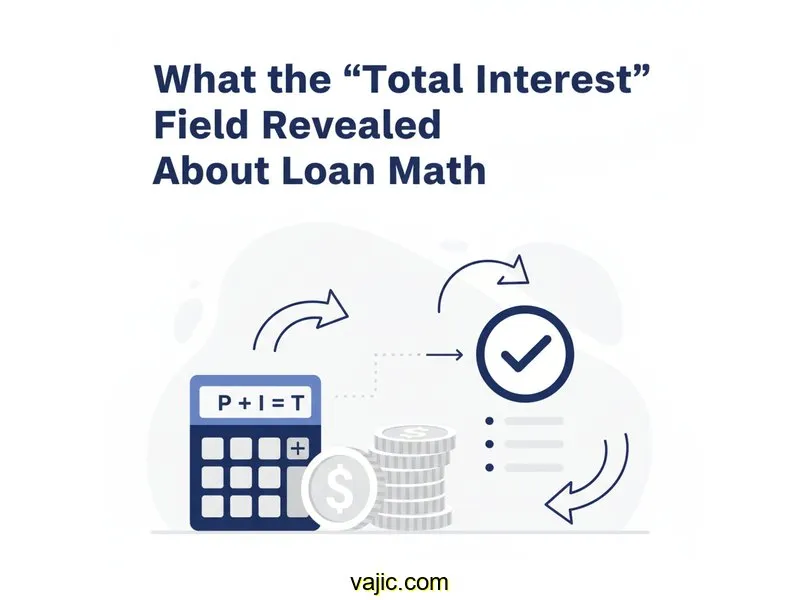
Auto Loan Calculator
Calculate payments over the life of your Loan
Home Blog Privacy Terms About Contact
Calculate payments over the life of your Loan
Home Blog Privacy Terms About ContactPublished on October 15, 2025

My whole journey into understanding loan math started with a simple water-cooler conversation. A colleague was excited about a new car they got, mentioning a surprisingly low monthly payment. I remember thinking, "Wow, that sounds really manageable." But then they mentioned the term was for six years, and a question popped into my head that I couldn't shake: does a lower monthly payment automatically mean a better deal? How do these numbers really work together?
I wasn't trying to make a big financial move myself; I was just genuinely curious. It felt like a puzzle. How could stretching something out for longer make the individual pieces smaller, and what was the hidden trade-off? That evening, I sat down with my laptop, determined to understand the mechanics behind it all. I pulled up a basic loan calculator, ready to become an expert in five minutes. Or so I thought.
My first attempts were clumsy. I typed in a random loan amount, say $15,000, and a rate, maybe 6%. I toggled the loan term back and forth between 48 months and 72 months and watched the "Monthly Payment" number dance. Yep, the longer term was definitely lower. For a moment, I thought, "Case closed! Longer is more affordable." But something felt incomplete. What was I missing? Was the monthly payment the only part of the story? It just seemed too simple. This is about my journey to understand how these calculations work, not about providing any financial advice.
My initial confusion started when I decided to get more methodical. I decided to compare two distinct scenarios using the same loan amount and interest rate. I wanted to isolate the term to see exactly what it was doing to the numbers. I imagined a hypothetical loan for $16,850 at an interest rate of 7.2%. My goal was to see the numerical difference between a 4-year term and a 6-year term.
I plugged in the first scenario: $16,850 at 7.2% for 48 months. The calculator gave me a monthly payment of about $412. Then, I changed only one thing: the term, to 72 months. The monthly payment dropped to around $302. My first reaction was satisfaction. "See? It's over $100 less per month. That's a huge difference in a budget." I almost closed the browser, feeling like I had my answer.
But my curiosity lingered. I noticed other fields on the calculator, one of which was "Total Interest Paid." I had been completely ignoring it. On a whim, I decided to write down the numbers for both scenarios. For the 48-month term, the total interest was about $2,926. For the 72-month term, the total interest was... $4,925. I blinked. I ran the calculation again. The numbers were right. My brain stalled. How could the option with the lower monthly payment result in me paying nearly $2,000 more in interest? It felt contradictory.
This was the moment of frustration and fascination. I wasn't just comparing two numbers anymore; I was facing a concept I clearly didn't grasp. I had assumed that the interest rate was the main driver of cost, but here was the loan term, silently adding thousands of dollars to the total. My simple investigation had revealed a gap in my own understanding, and I needed to figure out why.
The confusion pushed me to dig deeper. Instead of just looking at the final outputs of a calculator, I needed to understand the relationship between them. I decided to stop treating the calculator like a magic box and start using it as a learning tool. My goal was to prove to myself, step-by-step, why the lower payment led to a higher overall cost.
My first major realization was that the loan term wasn't just a measure of time; it was a multiplier. Every single month, interest is calculated on the amount you still owe. So, with a 72-month term, there are 24 more opportunities for interest to be calculated compared to a 48-month term. Even though the monthly payment is smaller, a bigger chunk of that payment goes toward interest in the beginning because the principal is so high.
This led me to my biggest "aha moment." The 'Total Interest Paid' field wasn't just an extra piece of data; it was the summary of the entire story. It represents the total amount of money paid to a lender for the service of borrowing money, completely separate from repaying the original loan amount. Seeing that one scenario cost nearly $2,000 more than the other was a stark, numerical illustration of the trade-off I had been seeking. It was the price of having a lower monthly payment.
Finally, I understood the purpose of the 'Monthly Payment' figure. It’s not meant to represent the overall cost. Instead, it’s a cash flow management number. It answers the question, "How much money do I need to set aside from my budget each month to service this debt?" Both numbers are important, but they answer fundamentally different questions. One is about affordability month-to-month, and the other is about the total expense over years.
To confirm this, I tested my new understanding. I ran a completely different scenario: a $9,500 loan at 8.1%. Over 36 months, the total interest was about $1,241. Over 60 months, it jumped to $2,125. The pattern held. The lower monthly payment came at the price of almost $900 in extra interest. I wasn't just taking the calculator's word for it anymore; I could see the mathematical relationship at play.
This whole exploration wasn't about deciding which loan was "better." It was about learning to read the language of loan calculations. It gave me a new level of confidence in looking at financial numbers. Here are the core lessons I took away about the math itself:

From what I've learned, it's because interest is calculated on the remaining loan balance periodically (usually monthly). With a longer term, your monthly payments are smaller, so you pay down the principal balance more slowly. Since the balance stays higher for a longer period, the interest has more principal to accrue on for more months, leading to a higher total interest amount over the life of the loan.
This was the core of my learning journey. Neither is "more important"—they just measure different things. The monthly payment is about affordability and cash flow management within your budget. The total interest is about the overall cost of borrowing the money. To understand a loan scenario completely, you have to consider both. One tells you what it feels like month-to-month, the other tells you what it costs in the end.
The best way I found is to do a direct comparison. Enter the same loan amount and interest rate twice. First, use a shorter term (e.g., 36 months) and write down the monthly payment and total interest. Then, change only the term to a longer one (e.g., 60 months) and write down the new numbers. Seeing the figures side-by-side makes the relationship between them very clear.
The principal is the original amount of money you borrowed. In my example, the principal was $16,850. Each monthly payment you make is split into two parts: one part covers the interest that has accrued for that month, and the other part goes toward paying down the principal. The goal is to get the principal balance to zero.
My biggest takeaway from this entire process was the realization that the numbers on a loan calculator tell a story. For a long time, I was only reading the first sentence—the monthly payment. I was missing the plot, the character development, and the ending, which were all contained in the other fields like the loan term and, most importantly, the total interest paid. Learning to see how these elements work together was incredibly empowering.
It transformed the calculator from a scary, authoritative tool into a sandbox where I could play with numbers and ask "what if" questions without any real-world consequences. If you've ever felt intimidated by these calculations, I encourage you to do the same. Open a calculator, plug in some hypothetical numbers, and just watch how they interact. You're not making a decision; you're just learning the language. And understanding that language is the first step toward feeling more confident with the numbers in your life.
This article is about understanding calculations and using tools. For financial decisions, always consult a qualified financial professional.
Disclaimer: This article documents my personal journey learning about loan calculations and how to use financial calculators. This is educational content about understanding math and using tools—not financial advice. Actual loan terms, rates, and costs vary based on individual circumstances, creditworthiness, and lender policies. Calculator results are estimates for educational purposes. Always verify calculations with your lender and consult a qualified financial advisor before making any financial decisions.
